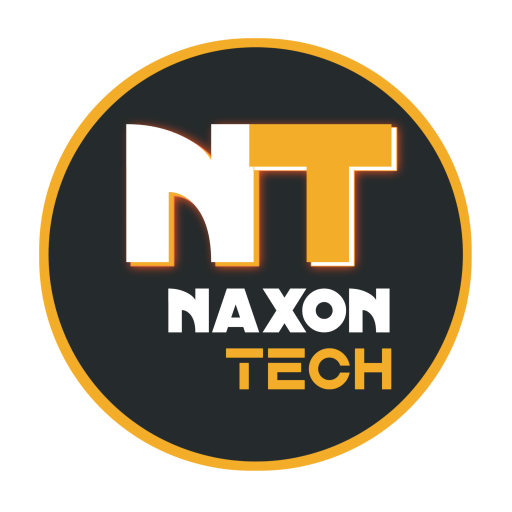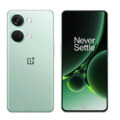- Naxon Tech
- All Products
- OnePlus
- OnePlus Open Foldable Phone – Specs, Price, Launch Date & More
OnePlus Open Foldable Phone – Specs, Price, Launch Date & More



- CPU: Qualcomm Snapdragon 8 Gen 2
- RAM: 16GB
- Storage: 256GB
- Display: 6.3-inches 120Hz AMOLED display
- Camera: 64MP + 48MP + 48MP
- OS: Android 13
Specs
Network
| Network Technology | GSM / CDMA / HSPA / EVDO / LTE / 5G |
Launch
| Status | Coming Soon |
Body
| Dimensions |
Unfolded: 155.1 x 130.1 x 6.3 mm Folded: 155.1 x 67.1 x 14.2-15.8 mm |
| Weight | 258g |
| Build | Glass front (Gorilla Glass Victus+) (folded), plastic front (unfolded), glass back (Gorilla Glass Victus+), aluminum frame |
| SIM <strong>SIM</strong> (Subscriber Identity Module) is a small card that contains mobile network subscriber's account information. This allows the phone using the card to attach to a mobile network. The SIM card is most commonly associated with GSM and UMTS mobile networks. Moving a SIM card from one phone to another allows a subscriber to switch mobile phones without having to contact their mobile network carrier. SIM cards can also be used by a phone to store limited amounts of data, such as phone numbers and text messages. |
Nano-SIM and eSIM Armor aluminum frame Stylus support IPX8 water resistant |
Display
| Type <strong>Design Type</strong> called form factor refers to a mobile phone's size, shape, and style as well as the layout and position of major components of phone. There are three major form factors seen in mobile phones => bar phones, folding phones and sliding phones. |
Foldable Dynamic AMOLED 120Hz |
| Size | 7.8 inches 2K Resolution |
| Resolution | 1812 x 2176 pixels |
| Protection | Corning Gorilla Glass Victus+ |
Platform
| OS | Android 13, One UI 5.1 |
| Chipset <strong>Chipset</strong> is a group of integrated circuits designed to perform one or a more dedicated functions, often with real time computing constraints, Popular smartphones are equipped with more advanced embedded chipsets that can do many different tasks depending on their programming. | Qualcomm Snapdragon 8+ Gen 1 |
| CPU <strong>CPU</strong> (Central Processing Unit) mostly known as processors, CPU processes instructions in order to carry out certain functions that make your device operate properly. Processors are often described as the brain of computers, smartphones and tablets, Smartphones and tablets rely on processors to carry out their every task, Processors are an incredibly important factor in selecting any type of computing device, including your smartphone. | Octa-core |
| GPU <strong>GPU</strong> (Graphics Processing Unit) is a single-chip processor designed to rapidly manipulate and alter memory to accelerate the creation of images in a frame buffer intended for output to a display, This includes things such as lighting effects, object transformations, and 3D motion. |
Adreno 730 |
Memory
| Card Slot <strong>Memory Card Slot</strong> is a special slot for inserting a memory card. Memory cards allow you to expand the phone's built-in memory, A memory card (sometimes called a flash memory card or a storage card) is a small storage medium used to store data such as text, pictures, audio, and video, for use on small, portable or remote computing devices such as mobile phones, mp3 players, digital cameras. | No |
| Internal Storage <strong>Internal Storage</strong> is a data storage space (flash memory) mostly used in smartphones, tablets and other electronic devices where operating system, apps, music, photos, videos, files and other user data Is stored. |
512GB 12GB RAM, 1TB 12GB RAM, 1TB 16GB RAM UFS 3.1 |
Main Camera
| Rear camera | 50MP + 10MP + 12MP |
| Features |
LED flash, HDR, panorama |
| Video |
8K@24fps, 4K@60fps, 1080p@60/240fps (gyro-EIS), 720p@960fps (gyro-EIS), HDR10+ |
Selfie Camera
| Front camera |
4 MP Cover camera: 10 MP |
| Features | HDR |
| Video |
4K@30/60fps, 1080p@30/60fps, gyro-EIS |
Sound
| Loudspeaker |
Yes, with stereo speakers |
| audio jack | No |
Connection
| WLAN |
Wi-Fi 802.11 a/b/g/n/ac/6e, dual-band, Wi-Fi Direct |
| Bluetooth <strong>Bluetooth</strong> is a wireless communications technology for exchanging data between mobile phones, headsets, computers and other network devices over short distances without wires, Bluetooth technology was primarily designed to support simple wireless networking of personal consumer devices. |
5.2, A2DP, LE, aptX HD |
| Positioning |
GPS, GLONASS, GALILEO, BDS |
| NFC <strong>NFC</strong> (Near field communication) is a set of standards for smartphones and similar devices to establish peer-to-peer radio communications with each other by touching them together or bringing them into proximity, usually no more than a few inches. | Yes |
| FM Radio | No |
| USB |
USB Type-C 3.2, OTG |
Extra Features
| Sensors <strong>Sensors</strong> are electronic components that detects and responds to some type of input from the physical environment. The specific input could be light, heat, motion, moisture, pressure and location, The output is generally a signal that is converted to use in computing systems, a location sensor, such as a GPS receiver is able to detect current location of your electronic device. |
Fingerprint (side-mounted), accelerometer, gyro, proximity, compass, barometer |
Battery & Charging
| Type <strong>Design Type</strong> called form factor refers to a mobile phone's size, shape, and style as well as the layout and position of major components of phone. There are three major form factors seen in mobile phones => bar phones, folding phones and sliding phones. |
Li-Po 4400 mAh, non-removable |
| charging |
25W wired, 50% in 30 min 15W wireless 4.5W reverse wireless |
Misc
| Price | ₹ 1,10,000 (expected) |
Tests
Details
OnePlus, a renowned smartphone manufacturer, is set to enter the foldable phone market with its upcoming device, tentatively called the OnePlus Open. After learning from the successes and failures of competitors like OPPO, OnePlus is well-positioned to make a splash in the foldable phone space. The release date for the OnePlus Open is expected to be in the second half of the year, possibly as early as August. The phone is anticipated to launch globally, including in the US, India, and the UK, although availability in some European markets might be limited due to legal issues.
Leaked renders of the OnePlus Open reveal a sleek and slim design with a book-style foldable format. The device is rumored to feature a 7.8-inch 2K AMOLED display on the inside and a 6.3-inch AMOLED display on the front, both potentially supporting a 120Hz refresh rate. Under the hood, it is expected to be powered by the Qualcomm Snapdragon 8 Gen 2 SoC and come with 16GB of RAM. Camera-wise, the OnePlus Open might boast a 48MP primary sensor, a 48MP ultrawide sensor, a 64MP telephoto camera, and a 32MP front camera for selfies.
While the exact pricing details remain unknown, it is speculated that the OnePlus Open will likely cost over $1,000, placing it in the premium segment of foldable phones. More information about the device, including its official name and pricing, is expected to be revealed in the near future.
Reviews
FAQ
When will the OnePlus foldable phone be released?
The OnePlus foldable phone, potentially called the OnePlus Open, is scheduled to be released in the second half of this year. Rumors suggest a possible launch in the first half of August.
What design can we expect from the OnePlus foldable phone?
Leaked renders indicate that the OnePlus Open will feature a slim book-style foldable design. It is expected to have flat edges, a pleather back, and a unique circular camera cutout on the rear housing three cameras.
What are the rumored specifications of the OnePlus foldable phone?
According to leaks, the OnePlus Open might offer a 7.8-inch 2K AMOLED display on the inside and a 6.3-inch AMOLED display on the front. It could be powered by the Qualcomm Snapdragon 8 Gen 2 SoC, accompanied by 16GB of RAM. The device is rumored to include a 48MP primary camera, a 48MP ultrawide sensor, a 64MP telephoto camera, and a 32MP front-facing camera for selfies.
Will the OnePlus foldable phone be available globally?
Yes, the OnePlus Open is expected to launch globally, including in the United States, India, and the United Kingdom. However, availability in some European markets might be limited due to ongoing legal battles.
What is the estimated price range for the OnePlus foldable phone?
While there is no official pricing information yet, industry speculations suggest that the OnePlus Open will likely cost over $1,000, positioning it as a premium foldable device. A more specific price range is expected to be revealed closer to the launch date.










